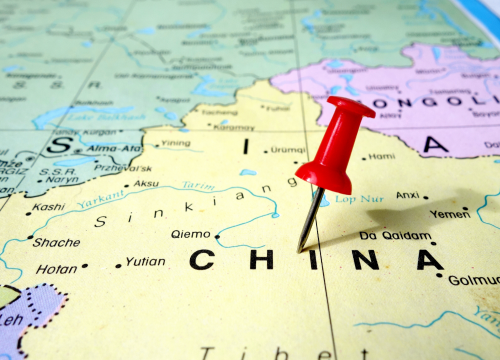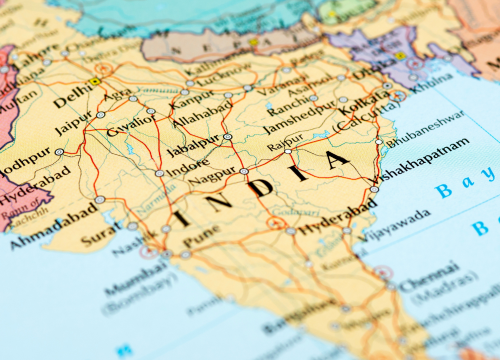
China and India, two of the world’s most populous nations, have captivated the global stage with their rich histories, diverse cultures, and rapidly growing economies. Despite their distinctive characteristics, a closer examination reveals striking similarities that bind these nations. This article aims to shed light on the commonalities between China and India, drawing upon factual information and references to unveil the shared threads that weave through their tapestries.

Ancient Civilizations:
Both China and India boast ancient civilizations that date back thousands of years. The Indus Valley Civilization in India and the Xia, Shang, and Zhou dynasties in China mark the cradle of these ancient cultures, contributing significantly to the world’s heritage.
Population Size and Diversity:
China and India stand as the two most populous countries globally, with populations exceeding a billion each. Furthermore, both nations host a remarkable diversity in terms of languages, religions, and ethnicities, fostering a mosaic of cultures within their borders.
Economic Growth:
In recent decades, both China and India have experienced remarkable economic growth, lifting millions out of poverty. The economic reforms in the late 20th century transformed these nations into major players on the global economic stage.
Technological Advancements:
China and India have emerged as key players in the field of technology. The rise of tech giants like Tencent, Alibaba, and Huawei in China mirrors the success of Indian companies like Infosys, Tata Consultancy Services (TCS), and Wipro, showcasing their prowess in the digital age.
Cultural Heritage:
Deep-rooted cultural traditions are evident in both nations. From classical art forms and literature to traditional festivals and rituals, China and India share a commitment to preserving and celebrating their cultural heritage.
Here’s a simplified comparison table highlighting key similarities between China and India:
| Aspect | China | India |
|---|---|---|
| Ancient Civilizations | Xia, Shang, Zhou dynasties | Indus Valley Civilization |
| Population Size | Over 1.4 billion (most populous) | Over 1.3 billion (second-most populous) |
| Diversity | Linguistic, ethnic, and religious diversity | Linguistic, ethnic, and religious diversity |
| Economic Growth | Rapid economic growth in recent decades | Significant economic growth in recent decades |
| Technological Advancements | Tech giants like Tencent, Alibaba, Huawei | Tech companies like Infosys, TCS, Wipro |
| Cultural Heritage | Rich cultural traditions and heritage | Deep-rooted cultural traditions and heritage |
| Global Influence | Emerging global economic and political power | Growing influence in global affairs |
In conclusion, the similarities between China and India, while not always apparent at first glance, underscore the shared human experiences that transcend geopolitical boundaries. From ancient civilizations and population dynamics to economic transformations and technological prowess, these nations find common ground in their historical trajectories and contemporary challenges. As the world continues to evolve, understanding the parallels between China and India becomes imperative for fostering mutual respect and collaboration on the global stage.
Q: Are China and India similar in terms of population size?
A: Yes, both China and India have populations exceeding a billion, making them the two most populous countries in the world.
Q: Do China and India share any ancient civilizations?
A: Yes, both nations have ancient civilizations contributing significantly to the world’s cultural heritage. China’s Xia, Shang, and Zhou dynasties parallel India’s Indus Valley Civilization.
Q: Are there economic similarities between China and India?
A: Absolutely. Both countries have experienced rapid economic growth in recent decades, implementing significant reforms that transformed them into major global economic players.
Q: How diverse are China and India in terms of languages and cultures?
A: Both nations exhibit remarkable diversity in languages, religions, and ethnicities, fostering a mosaic of cultures within their borders.
Q: Do China and India have a similar technological landscape?
A: Yes, both countries have emerged as key players in the field of technology, boasting successful tech companies and contributing to advancements in the digital age.
Q: Are there similarities in the preservation of cultural heritage between China and India?
A: Absolutely. Both nations have a deep commitment to preserving and celebrating their cultural heritage, evident in classical art forms, literature, and traditional festivals.
Q: How do China and India compare in terms of global influence?
A: Both China and India have been gaining influence on the global stage, with China being an emerging economic and political power, and India’s influence growing in various aspects of international affairs.
Q: Are there any references or recommended readings for a deeper understanding of the similarities between China and India?
A: Yes, references like Samuel P. Huntington’s “The Clash of Civilizations,” Amartya Sen’s “The Argumentative Indian,” and Zhao Suisheng’s “A Nation-State by Construction” provide valuable insights into the historical, cultural, and political aspects of both nations.
Q: How have economic reforms contributed to the growth of China and India?
A: Economic reforms in both China and India, especially in the late 20th century, played a pivotal role in their economic growth. Reforms such as liberalization, privatization, and globalization opened up markets, attracting foreign investments and fostering domestic entrepreneurship.
Q: Are there similarities in the role of technology giants in China and India?
A: Yes, both countries have witnessed the rise of technology giants. China boasts companies like Tencent, Alibaba, and Huawei, while India is home to tech giants such as Infosys, Tata Consultancy Services (TCS), and Wipro, showcasing their prowess in the technological landscape.
Q: How do China and India address the challenges of linguistic diversity?
A: Both nations navigate linguistic diversity by recognizing multiple official languages. While China has Mandarin as the official language, India recognizes Hindi and English at the national level, with each state having its own official languages.
Q: Are there shared environmental challenges between China and India?
A: Yes, both countries face environmental challenges such as air and water pollution, deforestation, and the impact of rapid industrialization. Both governments are actively working on sustainable development initiatives to address these issues.
Q: Do China and India collaborate on global issues?
A: Both countries engage in international collaborations on various global issues, including climate change, sustainable development, and healthcare. Their participation in international forums reflects their shared commitment to addressing global challenges.
Q: How do China and India contribute to the preservation of their historical sites and monuments?
A: Both nations recognize the importance of preserving historical sites and monuments. Government initiatives, regulations, and UNESCO partnerships in both China and India aim to protect and promote their rich cultural heritage for future generations.
Q: In what ways do China and India exhibit soft power on the global stage?
A: Both nations exert soft power through cultural diplomacy, promoting their arts, literature, cuisine, and traditions globally. Initiatives like Confucius Institutes (China) and promotion of yoga and Bollywood (India) contribute to their soft power influence.
Q: How do China and India balance economic development with environmental sustainability?
A: Both countries are increasingly emphasizing sustainable development, integrating environmental considerations into their economic policies. Efforts include investments in renewable energy, green technologies, and policies to curb environmental degradation.
Q: How do China and India approach higher education and research?
A: Both countries have made significant investments in higher education and research. China’s rapid expansion of universities and focus on research and development parallels India’s commitment to fostering innovation through academic institutions and research centers.
Q: Are there similarities in the governance structures of China and India?
A: While the political systems differ (China being a one-party system and India a multi-party democracy), both countries have a federal structure with multiple levels of governance, allowing for regional autonomy within the national framework.
Q: How do China and India address poverty alleviation and social welfare?
A: Both nations have implemented policies to alleviate poverty and improve social welfare. China’s poverty alleviation programs and India’s initiatives like the Mahatma Gandhi National Rural Employment Guarantee Act (MGNREGA) aim to uplift marginalized communities.
Q: Are there shared cultural values that influence societal norms in China and India?
A: Confucian values in China and principles from various Indian philosophies contribute to societal norms. Respect for elders, emphasis on education, and the importance of family are examples of shared cultural values.












Leave a Reply